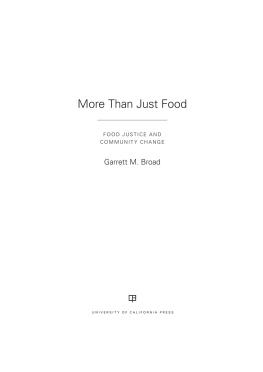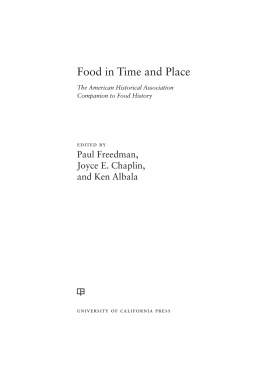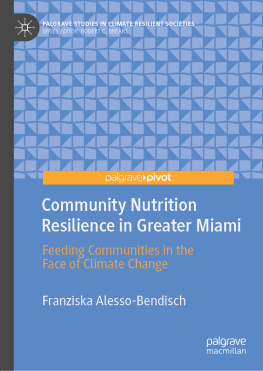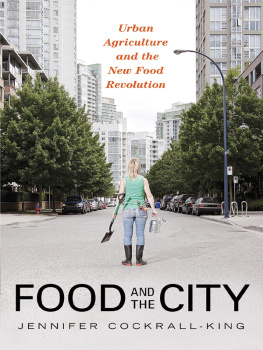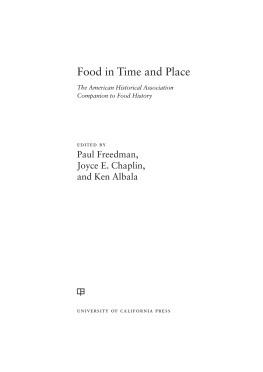
PUBLIC HISTORY AND THE FOOD MOVEMENT
Public History and the Food Movement argues that todays broad interest in making food systems fairer, healthier, and more sustainable offers a compelling opportunity for the public history field.
Moon and Stanton show how linking heritage institutions unique skills and resources with contemporary food issues can offer accessible points of entry for the public into broad questions about human and environmental resilience. They argue that this approach can also benefit institutions themselves, by offering potential new audiences, partners, and sources of support at a time when many are struggling to remain relevant and viable. Interviews with innovative practitioners in both the food and history fields offer additional insights.
Drawing on both scholarship and practice, Public History and the Food Movement presents a practical toolkit for engagement. Demonstrating how public historians can take on a vital contemporary issue while remaining true to the guiding principles of historical research and interpretation, the book challenges public historians to claim an expanded role in todays food politics. The fresh thinking will also be of interest to public historians looking to engage with other timely issues.
Michelle Moon is Director of Interpretation and Program Evaluation at the Newark Museum in Newark, New Jersey, USA. She is the author of Interpreting Food at Museums and Historic Sites (2015) and maintains an active practice in museums, food, and community resilience.
Cathy Stanton is a Senior Lecturer in Anthropology at Tufts University, USA. She is both a scholar and a practitioner of public history, with a particular focus on the uses of history and culture within both urban and rural redevelopment projects.
PUBLIC HISTORY AND THE FOOD MOVEMENT
Adding the Missing Ingredient
Michelle Moon and Cathy Stanton
First published 2018
by Routledge
711 Third Avenue, New York, NY 10017
and by Routledge
2 Park Square, Milton Park, Abingdon, Oxon, OX14 4RN
Routledge is an imprint of the Taylor & Francis Group, an informa business
2018 Taylor & Francis
The right of Michelle Moon and Cathy Stanton to be identified as authors of this work has been asserted by them in accordance with sections 77 and 78 of the Copyright, Designs and Patents Act 1988.
All rights reserved. No part of this book may be reprinted or reproduced or utilised in any form or by any electronic, mechanical, or other means, now known or hereafter invented, including photocopying and recording, or in any information storage or retrieval system, without permission in writing from the publishers.
Trademark notice: Product or corporate names may be trademarks or registered trademarks, and are used only for identification and explanation without intent to infringe.
Library of Congress Cataloging-in-Publication Data
A catalog record for this book has been requested
ISBN: 978-1-62958-114-9 (hbk)
ISBN: 978-1-62958-115-6 (pbk)
ISBN: 978-1-31511-434-7 (ebk)
Typeset in Bembo
by codeMantra
As the twenty-first century matures, bringing with it hindsight on recent times, we recognize how fortunate we have been to witness revolutionary changes in the way we think about foodas citizens, as consumers, and as agents of change. This book is both a reflection of, and we hope a contribution to, that continuing transformation. The ideas we offer here have emerged from many conversations and collaborations over the past several years. Our thinking has benefited from the perspectives and responses of the scores of colleagues who participated in workshops and sessions we led at the American Association for State and Local History, National Council on Public History, and other conferences. We are also indebted to food professionals, from growers and migrant farmers to food processors, distributors, and activists, for the education they have provided us, directly and indirectly. Editorial guidance from Jennifer Collier and Jack Meinhardt at Left Coast Press as well as Dominic Shryane and Marc Stratton at Routledge and suggestions from peer reviewers have helped to make the book stronger. The interviewees whose ideas are included here have enriched our understandings of food history in ways that go far beyond the page.
Michelle would particularly like to acknowledge her colleagues at Strawbery Banke Museum in Portsmouth, NH, and Mystic, CT, both of which provided fertile test beds for the rich possibilities of a connected, contemporary food interpretation, and also her peers in the global Slow Food network, whose insistence that critical issues in food cannot be separated from one another brought an entirely new frame to her interpretation practice. Faculty and advisers in the Museum Studies program at the Harvard Extension School, particularly Kathy Jones, Laura Roberts, Mary Molloy, and thesis reader Linda Norris, challenged and improved her thinking on museums role in society and interpretive planning for civically engaged practice. The supportive and collegial community at the American Association for State and Local History has also provided continuing inspiration for pushing interpretive ideals forward.
Cathy owes a particular debt of gratitude to those who were involved in the Ethnographic Landscape Study for the Martin Van Buren National Historic Site, which provided an invaluable platform and a fascinating research site for thinking through many of these issues. Closer to home, members of North Quabbin Energy and colleagues and students at Tufts University and the University of Massachusetts Amherst have been important interlocutors and collaborators. Those involved in the 2015 Farm Values: Civic Agriculture at the Crossroads project, particularly at Mount Grace Land Conservation Trust, have also helped immeasurably in figuring out how some of the ideas in this book might look in practice. It has been a true pleasure to have such engaged and committed partners over the years.
Michelle Moon and Cathy Stanton
Practicing history helps to cultivate a long perspective. It can be a counterbalance to claims that things have never been this bad before, that a given situation is unprecedented, that the entire future is at stakefor a culture, a nation, humanity, or the planet itselfif some particular course of action is not taken immediately. Explorers of history tend to gain a sense of the human past and present as a long series of adaptations, course-corrections, unintended consequences, complex encounters and equally complex compromises, in which occasional outright disasters and dramatic shifts are the exception rather than the rule and in which predictions of doom have a cyclical history of their own. These are habits of mind that favor slowness, careful reflection, and a reluctance to jump onto bandwagons, qualities that can be extremely valuable in thinking through any pressing challenge.
We are true believers in those values, so we are aware of the irony of starting this book by talking about the unique urgency of the present moment. Our hope is that we can create a framework for bringing together these seemingly incompatible thingsthe long, slow perspective of history and the pressing need to actand to show why food is an exceptional vehicle for bridging the gap between them.


